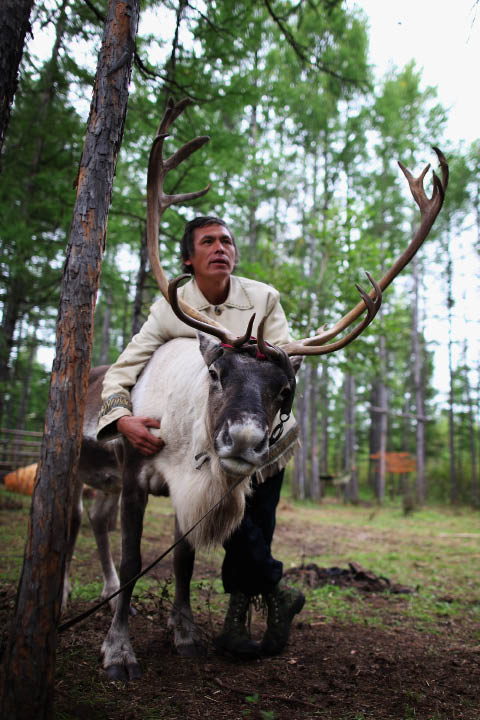|
Ethnic minorities, especially those with small populations, face severe pressure to preserve their intangible cultural heritage. In the virgin forest on the northwestern slope of the Greater Hinggan Range and the eastern bank of the Ergun River live the Evenkis. Little is known about these minority people. They lead a nomadic life in the forest and live by hunting and raising reindeers. Over years the Evenkis have developed their unique way of hunting and taming the creatures; they have successfully used reindeers in transportation and production. However, their hunting skills have gradually been lost. Among the population of Aoluguya Township, Genhe City, in Inner Mongolia fewer than ten people know how to make traditional hunting tools and only one to two elders remember their traditional hunting methods.
The Hezhen is another case in point. This ethnic group doesn’t have a written language, so the Hezhen people have to pass their Yimakan, an oral tradition of singing and talking, from generation to generation by word of mouth. However, young Hezhen people today, for various reasons, are not interested in learning the art. The very few Hezhen who still perform it are all over 60 years of age.
As of July 2009, the central treasury had allocated RMB 659 million for intangible cultural heritage protection. According to incomplete statistics, from 2005 to 2009 provincial financial departments allocated RMB 1.13 billion in this regard. However, considering China’s rich intangible cultural heritage resources, these subsidies appear little more than a drop in the ocean. Moreover, intangible cultural heritage protection involves complicated intellectual property issues. It is easy to counter other’s intellectual property claims or violate their rights where intangible cultural matters are involved, precisely because it is difficult to ascertain who created and developed certain traditions.
 |
| An Evenki walks his reindeer in Genhe City, Inner Mongolia. China Foto Press |
Protection of “Living Cultures”
According to Jia Yinzhong, a professor with Southwest University for Nationalities, the most striking feature of intangible cultural heritage lies in its nature as a “living culture,” relying on people to carry it forward through personal teaching of songs, movements or craftsmanship. Therefore, it’s up to the specific inheritors to carry on the tradition and ensure its survival.
To avoid such phenomena as “songs disappear with the death of a singer” and “arts extinct on the death of the last artist,” regarding endangered intangible cultural heritage with fragile inheritance links (aged and weak representative inheritors), the Chinese government has set about a rescue mission, systematically recording comprehensive information on inheritors of oral arts, techniques and procedures, unrecorded plays, rituals and so on by using modern multi-media archiving methods. Meanwhile, effective inheritance mechanisms are being established to facilitate succession plans.
|
